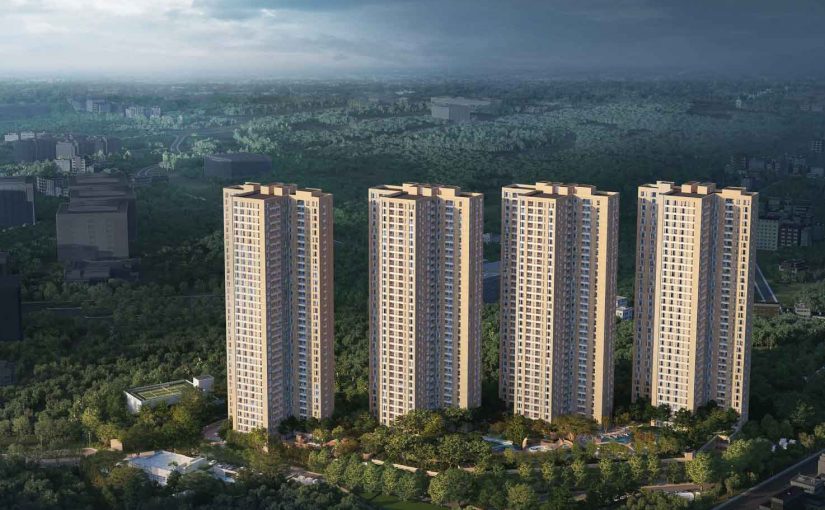
By
Assistant Manager - Design|
Getting your Trinity Audio player ready...
|
The ‘green’ movement will be empowered by ‘green occupants’- those with evolved behavior, promoting environmental sustainability. An occupant of the 31st floor of a Platinum Rated LEED-certified Green Building operates the artificial cooling mechanism, draws down the blinds and falls back on artificial lighting during summer, an irony because ‘green’ project occupants are probably the first who defeat the purpose.
An occupant of the 31st floor of a Platinum Rated LEED-certified Green Building operates the artificial cooling mechanism, draws down the blinds and falls back on artificial lighting during summer, an irony because ‘green’ project occupants are probably the first who defeat the purpose.
The building sector consumes about 40 percent of global energy resources and accounts for about 23 percent of air pollution. Therefore, the ‘green’ building movement is critical in preventing energy and resource depletion. And yet, the concept of sustainable buildings has been largely handicapped by the ‘energy performance gap’ – the difference between estimated and actual energy savings – through inefficient energy modeling systems, faulty installation, non-compliance and inefficient estate/ facility management.
The usual last mile tragedy
Yale University and University of Bath research emphasized that inadequate energy simulation was affecting the green building movement. A few years ago, a community in southwest England replaced a 1960s school building with one using triple-glazed windows and insulated walls – with no change in the number of students or staff. That’s right, no change.
And then the bigger surprise: the new building consumed more energy in a month than the old building did in a year. This flummoxed modelers who had extrapolated energy calculations from the model of an isolated classroom receiving full sun during much of the day – an observation that prescribed the tinting of windows and shading to reduce solar gain. Interestingly, the school stood in a valley surrounded by trees that shaded much of the building; the building required all the solar gain it could get. The result is that the classrooms were so dark that the lights had to be switched on all day.
The fault lay in the fact that energy simulations for isolated buildings disregard the effect of adjacent properties and often produce erroneous results that conflict with reality. The resulting EPG causes poor (sometimes negative) returns on investment in energy improvements.
Handle with care
A camera in the parking lot of a green building was wired as if it were a thermal sensor, and initiated a call for energy any time anything passed in front of its lens. Even though this could be an extreme case, such equipment installation disasters are not uncommon, resulting in ‘green’ buildings failing to deliver promised savings.
Reduce, reuse and recycle
Occupants affect the success of green buildings through the following realities:
- Non-compliance with ‘green’ recommendations.
- Low awareness leading to irrational choices (replacement of water-efficient fixtures with water-intensive equivalents like rain showers or inefficient choice of luminaires, air conditioners and other appliances; non-compliance with waste segregation at source).
Eyes on the prize
Green building monitoring helps plug EPG.
Resource monitoring is most effective through water meters and energy meters. Interestingly, building managements often use precious municipal water (not treated sewage) for gardening, road cleaning and car-washing; absence of waste bins for waste segregation result in landfilling (as opposed to recycling).
The only savior could be a ‘green’ mindset that extends beyond buildings, a number of climate-responsive architectural masterpieces have indeed created positive impact worthy of emulation: One Angel Square (Manchester), One Bryant Park (New York), US, Shanghai Tower (Shanghai), Bahrain World Trade Center (Manama) and Sohrabji Godrej Green Business Centre (Hyderabad).
The success of the ‘green’ movement depends on feedback and awareness. Optimized energy modeling needs to be more contextual. Occupants and building managers need to recognize the extent to which their choices affect the environment.
The bottom line is that the ‘green’ movement will be empowered by ‘green occupants’- those with evolved behavior, promoting environmental sustainability.
“We are responsible for what we are, and whatever we wish ourselves to be, we have the power to make ourselves. If what we are now has been the result of our own past actions, it certainly follows that whatever we wish to be in the future can be produced by our present actions; so we have to know how to act.” ? Swami Vivekananda
Leave a comment







